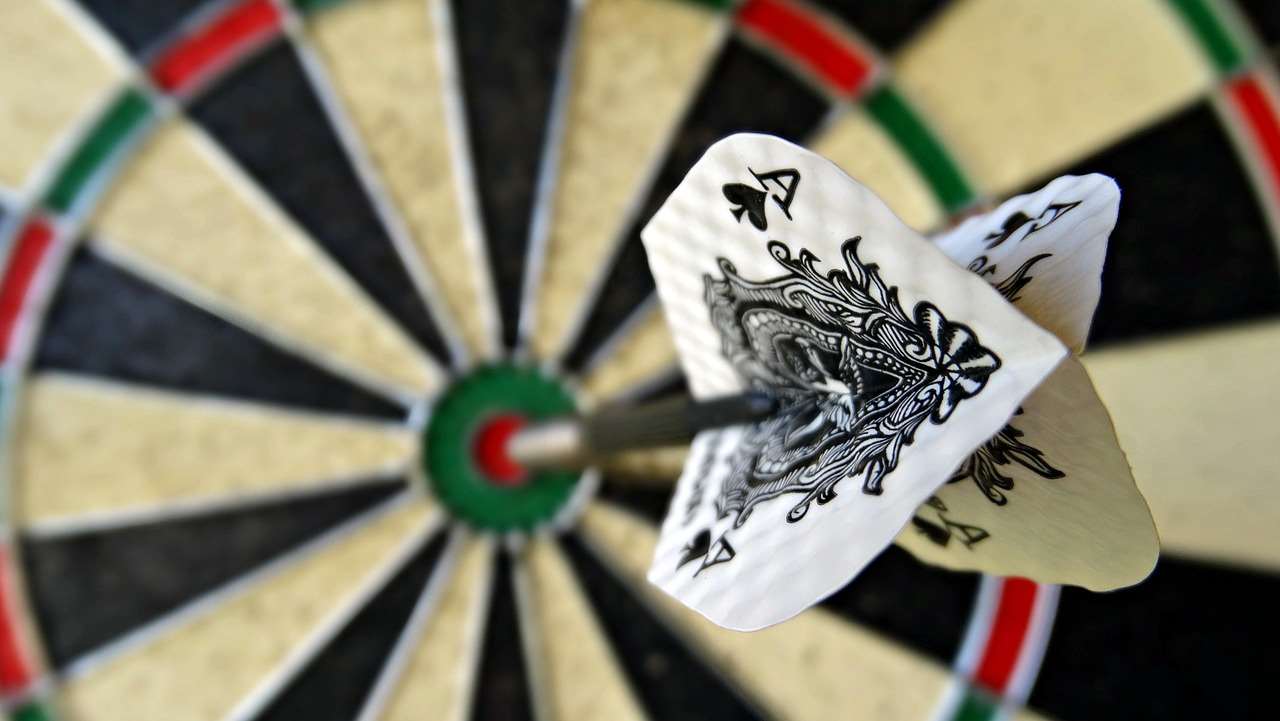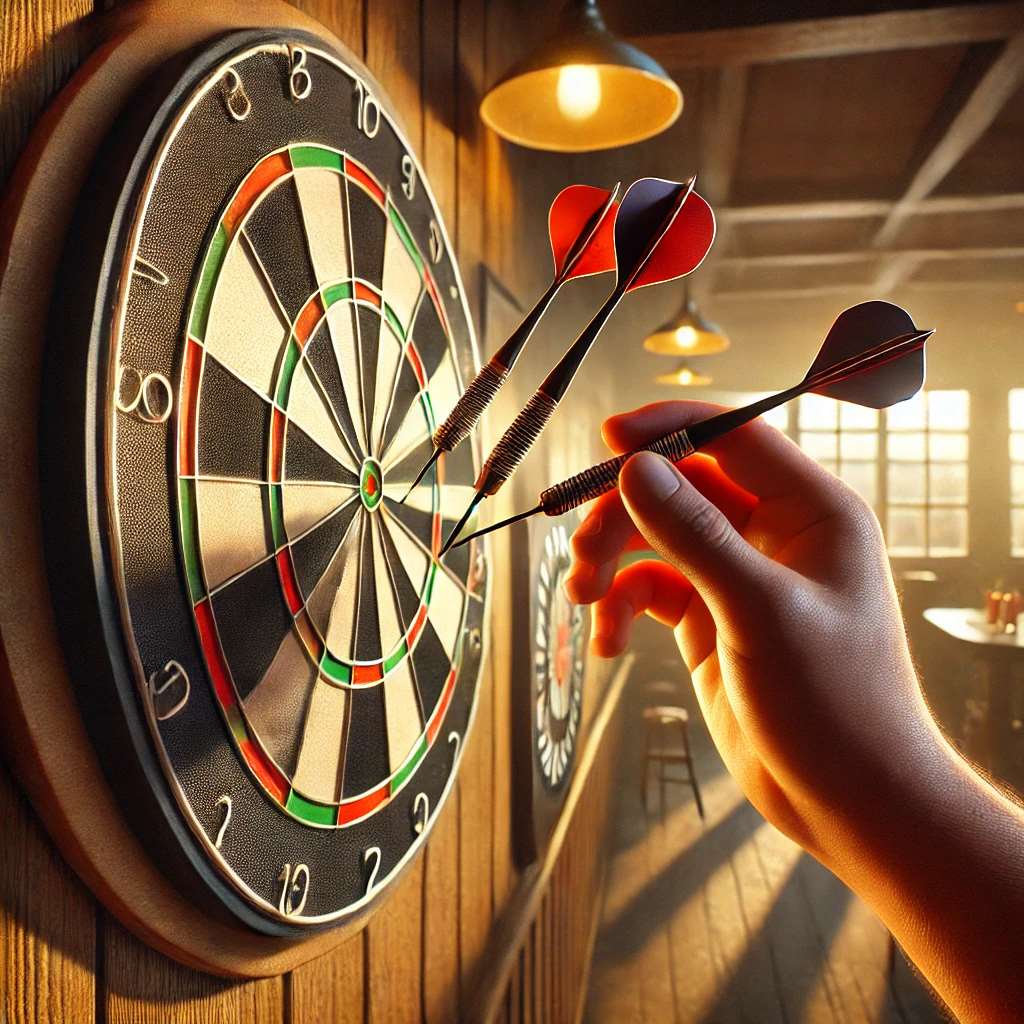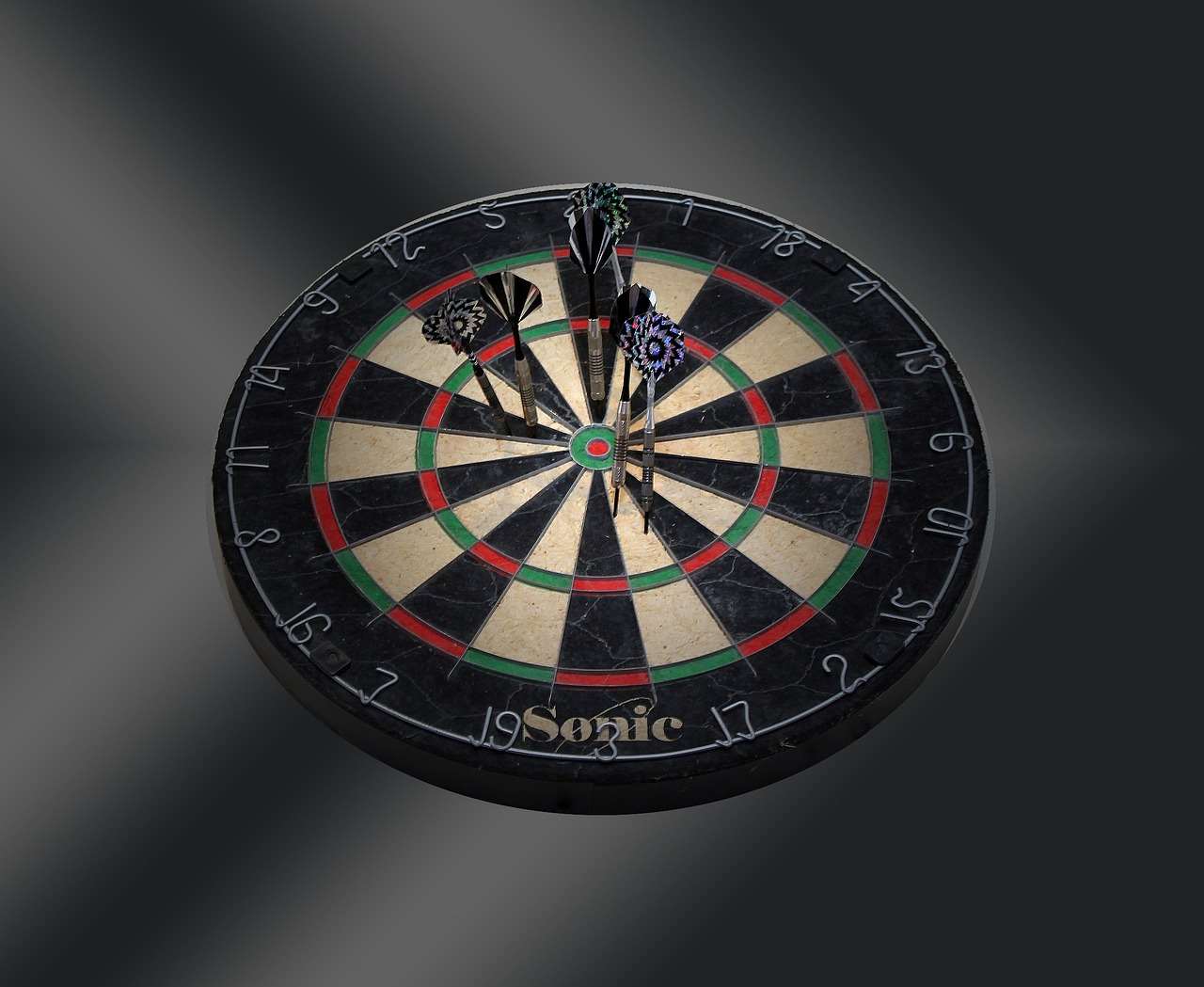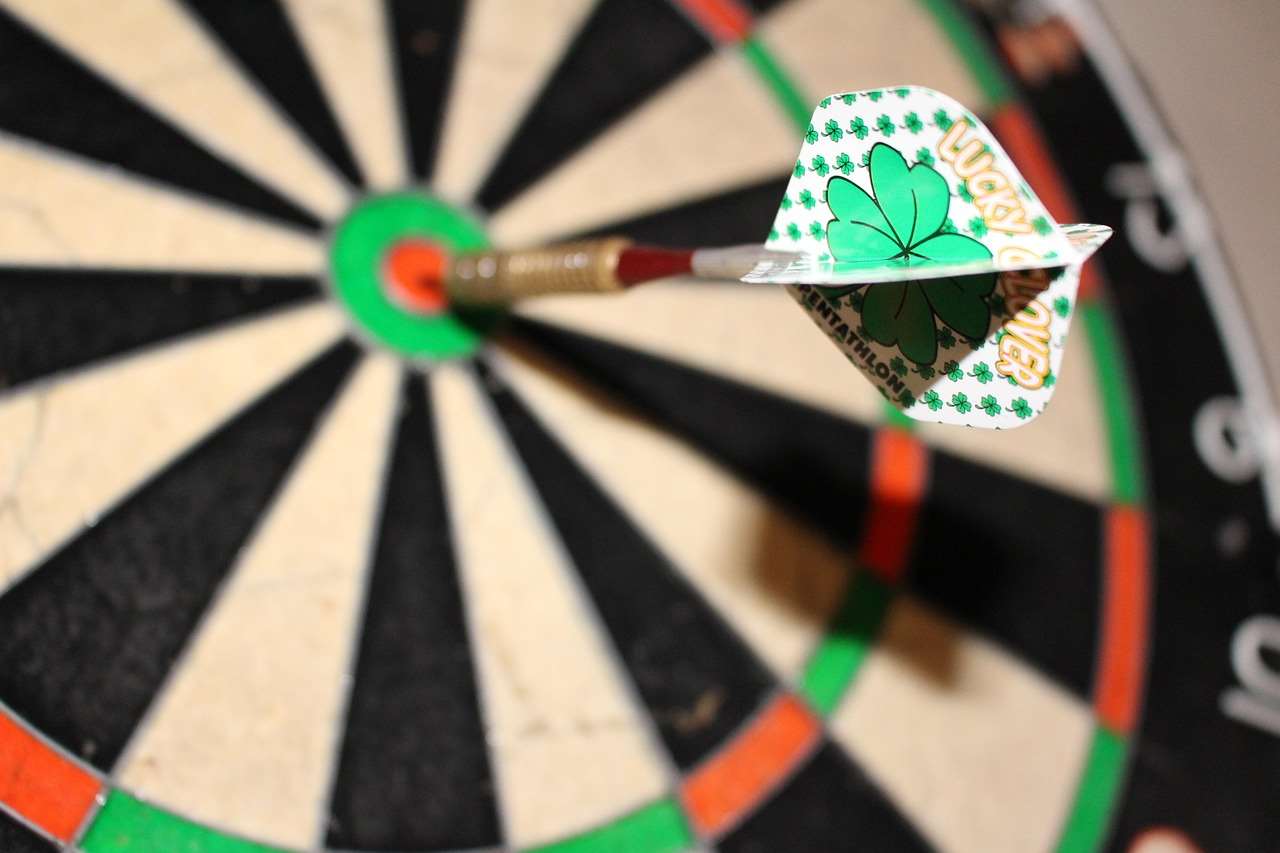The **double in double out darts rules** demand that a player must begin and end a leg by hitting a double. This adds a layer of strategy and precision, turning even straightforward games into nail-biting contests. In this guide, we’ll delve deep into the specifics of these rules, exploring strategies, variations, and everything you need to master this challenging darting format.
⚠️ Still Using Pen & Paper (or a Chalkboard)?! ⚠️
Step into the future! The Dart Counter App handles all the scoring, suggests checkouts, and tracks your stats automatically. It's easier than you think!
Try the Smart Dart Counter App FREE!Ready for an upgrade? Click above!
Understanding Double In Double Out Darts Rules
Let’s break down the core components of the **double in double out darts rules**. Unlike standard games where you can start scoring immediately, in this variation, you must first hit a double (any of the numbers around the outer ring of the dartboard) to begin reducing your score. This is the “double in” requirement.
Similarly, to win a leg, you must finish by hitting a double. This is the “double out” requirement. A common score to finish on is 40, which would require a double 20. If you reduce your score to 1 with a throw that isn’t on a double, then your score will return to whatever it was at the start of that turn. Missing either of these targets results in your turn ending, and your score remains unchanged for that round.

Why Play Double In Double Out?
The **double in double out darts rules** introduce several interesting dynamics to the game:
- Increased Difficulty: It’s significantly harder than starting and ending with any number, forcing players to refine their accuracy.
- Strategic Depth: Players must carefully plan their shots to leave themselves with manageable doubles.
- Mental Fortitude: The pressure of needing a double to start or finish can be intense, testing a player’s composure.
Strategies for Double In
Successfully navigating the “double in” requirement demands a specific set of strategies. One option is to play it safe by aiming for a double that gives you options, but if you are good at hitting 20s, then going for double 20 is often the most efficient option.
Aiming for a specific double relies on consistency and the ability to group your darts closely. If you tend to spray your darts around the board, starting on a double will be extremely difficult.
Target Selection
Choosing which double to aim for on your first throw is a crucial strategic decision. Here are some popular options:
- Double 20 (40): A high-value option, allowing for quick scoring if successful. If you miss, you can aim for the single 20 or the treble 20 on your next throws.
- Double 16 (32): A safer choice as it’s closer to the center of the board and offers decent scoring potential.
- Double 12 (24): Another safe option. Also, 24 can be divided in many ways if you hit the single 12 instead of the double, setting you up for easier scores.
Ultimately, the best choice depends on your personal strengths and weaknesses. If you’re a consistent treble 20 hitter, then attempting double 20 could be a high-risk, high-reward strategy.
Double Out Strategies and Checkouts
Finishing a leg in **double in double out darts rules** requires even more precision and planning than starting it. The “double out” rule means you must strategically set up your final throws to leave yourself with a manageable double. This is where checkout charts become incredibly useful.

Understanding Checkout Charts
Checkout charts are visual guides that show you the optimal throws to make when you’re within a certain score range. They prioritize leaving yourself with a double on your final dart. For example, if you’re on 80, a common checkout is treble 20 (60) followed by double 10 (20). Using checkout charts is a good practice to help master the game.
These charts are invaluable for quickly calculating the best possible route to the finish. There are many resources available online and as mobile apps, so you can always have them on hand during practice or matches. Furthermore, there are a few obscure dartboard games list that utilize similar principles to enhance darting skills.
Common Checkout Routes
Here are a few of the most common and useful checkout routes to memorize:
- 170: T20, T20, Bullseye
- 167: T20, T19, Bullseye
- 164: T20, T18, Bullseye
- 161: T20, T17, Bullseye
- 160: T20, T20, D20
- 100: T20, D20
- 80: T20, D10
- 40: D20
- 32: D16
- 4: D2
Practice Drills for Double In Double Out
Mastering **double in double out darts rules** requires dedicated practice. Here are some drills to improve your accuracy and strategic thinking:

- Double Practice: Focus solely on hitting doubles. Start with easier doubles like D20 and D16, then gradually move on to more challenging ones.
- Checkout Practice: Use checkout charts to practice specific checkout combinations. Set up scenarios where you’re on a certain score and try to finish within a few darts.
- Game Simulation: Play full games of double in double out against yourself or a partner, focusing on implementing your strategies and practicing under pressure.
Variations and Alternative Rules
While the standard **double in double out darts rules** are widely accepted, some variations exist. Here are a few to be aware of:
Master Out
In this variation, players must finish on either a double or a treble. This adds another layer of complexity to the checkout strategy.
Single In Double Out
This version relaxes the starting requirement, allowing players to begin scoring with any number but still requiring a double to finish.
Team Play
Double in double out can also be played in teams, with players alternating throws and combining their scores. Team play requires effective communication and coordination to strategize checkouts and cover for each other’s weaknesses.
Tips for Improving Your Double In Double Out Game
Beyond practice drills and strategic planning, here are some general tips to help you improve your **double in double out darts rules** game:
- Consistent Stance: Develop a stable and repeatable stance to ensure consistent throws.
- Smooth Release: Focus on a smooth and controlled release to minimize errors.
- Mental Focus: Maintain concentration and avoid getting discouraged by missed doubles.
- Equipment: Experiment with different dart weights, shafts, and flights to find what works best for you.
Remember, playing Darts Variants Fun Games can be a fun way to hone skills applicable to the Double In Double Out format, making practice less monotonous.

The Psychology of Double In Double Out
The **double in double out darts rules** place a significant emphasis on the psychological aspect of the game. The pressure of needing a double to start or finish can be incredibly nerve-wracking, especially in competitive situations. Developing mental resilience is crucial for success in this format.
Dealing with Pressure
Here are some strategies for managing pressure during a double in double out match:
- Deep Breathing: Take slow, deep breaths to calm your nerves and focus your mind.
- Positive Self-Talk: Replace negative thoughts with positive affirmations.
- Visualization: Visualize yourself successfully hitting the double you need.
- Routine: Establish a pre-throw routine to help you stay focused and consistent.
Choosing the Right Equipment
While skill and strategy are paramount, using the right equipment can certainly give you an edge. The ideal darts for **double in double out darts rules** will depend on your personal preferences and throwing style, but here are some considerations:

- Dart Weight: Experiment with different dart weights to find what feels most comfortable and allows you to maintain control.
- Shaft Length: Shorter shafts tend to provide more stability, while longer shafts can generate more spin.
- Flight Shape: Different flight shapes affect the dart’s trajectory and stability. Standard flights are a good starting point, but you may want to experiment with other shapes.
- Grip: Choose a dart with a grip that provides adequate traction without being too abrasive.
Another old dart game rule, that can affect performance is how close the board is to a draft.
Conclusion
Mastering the **double in double out darts rules** requires a combination of skill, strategy, and mental fortitude. By understanding the core rules, practicing diligently, and developing effective checkout strategies, you can significantly improve your game and enjoy the challenge of this rewarding darting format. Remember the key is to practice hitting those doubles! Now, grab your darts and start practicing those doubles!
Ready to take your dart game to the next level? Check out our other articles for more tips and strategies!
Hi, I’m Dieter, and I created Dartcounter (Dartcounterapp.com). My motivation wasn’t being a darts expert – quite the opposite! When I first started playing, I loved the game but found keeping accurate scores and tracking stats difficult and distracting.
I figured I couldn’t be the only one struggling with this. So, I decided to build a solution: an easy-to-use application that everyone, no matter their experience level, could use to manage scoring effortlessly.
My goal for Dartcounter was simple: let the app handle the numbers – the scoring, the averages, the stats, even checkout suggestions – so players could focus purely on their throw and enjoying the game. It began as a way to solve my own beginner’s problem, and I’m thrilled it has grown into a helpful tool for the wider darts community.